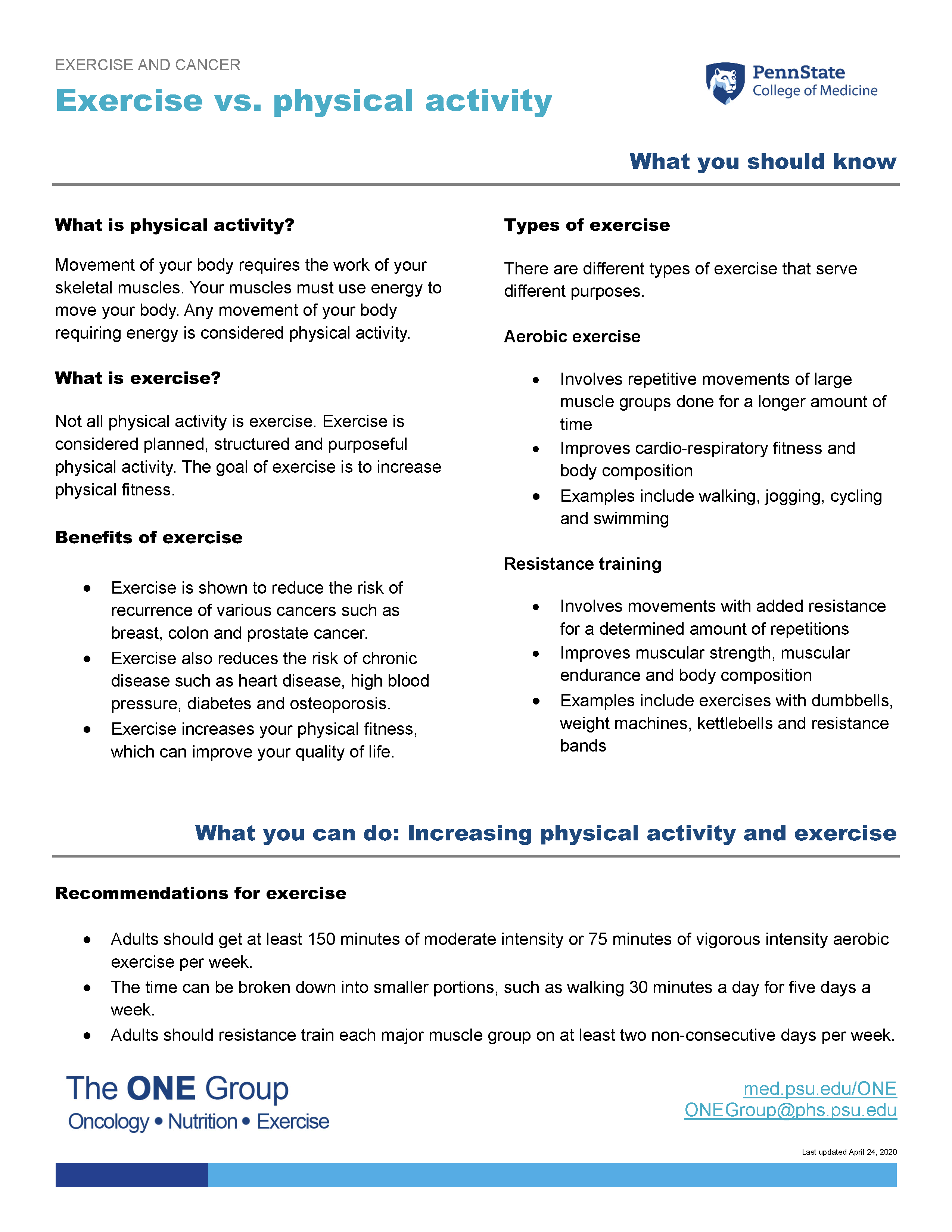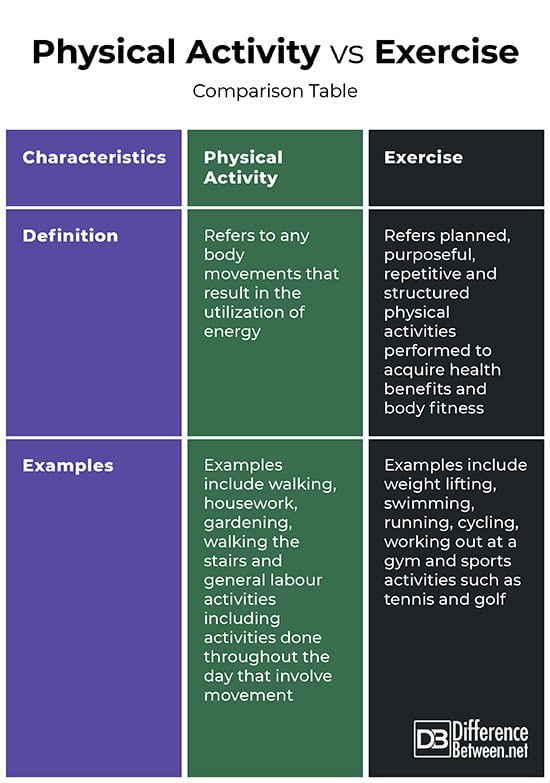What’s the deal with exercise, physical activity, and fitness? Are they all the same, or is there a difference between them? If you’ve ever found yourself pondering these questions, you’re not alone. Understanding the nuances between exercise, physical activity, and fitness can help you make informed choices about your health and well-being. So, let’s dive right in and explore the differences between these terms in a fun and engaging manner, shall we?
When it comes to exercise, physical activity, and fitness, it’s important to know that they are related but distinct concepts. Exercise refers to planned, structured, and repetitive movements aimed at improving or maintaining physical fitness. It’s like following a workout routine or hitting the gym to work up a sweat. On the other hand, physical activity encompasses any bodily movement that requires energy expenditure, from walking the dog to dancing like nobody’s watching. It’s all about getting your body moving and being active in your daily life. Lastly, fitness is a broader term that encompasses a person’s overall physical condition, including cardiovascular health, muscular strength, flexibility, and more. It’s like the big picture of your physical well-being. So, while exercise is a type of physical activity that contributes to fitness, not all physical activity necessarily leads to fitness. Understanding these distinctions can help you tailor your approach to staying active and fit, whether you prefer structured workouts or incorporating more movement into your daily routine.
In summary, exercise, physical activity, and fitness are interconnected but
Exercise, physical activity, and fitness are related but have distinct differences. Physical activity refers to any bodily movement that requires energy expenditure, such as walking or cleaning. Exercise, on the other hand, is a planned and structured form of physical activity aimed at improving fitness levels. Fitness is the overall ability to perform physical activities and encompasses various components like cardiovascular endurance, muscular strength, and flexibility. While all three are important for overall health, exercise is a specific type of physical activity designed to enhance fitness.

Understanding the Difference: Exercise, Physical Activity, and Fitness
Exercise, physical activity, and fitness are terms that are often used interchangeably, but they have distinct meanings and implications. In order to fully grasp the importance of each and how they contribute to overall health and well-being, it is essential to understand the differences between them.
Exercise: More Than Just Movement
Exercise refers to planned, structured, and repetitive physical activity that is performed to improve or maintain physical fitness. It involves engaging in specific movements and exercises with the intention of targeting and challenging different muscle groups and systems of the body.
Regular exercise offers numerous benefits, both physical and mental. It strengthens muscles, improves cardiovascular health, enhances flexibility and endurance, and helps maintain a healthy weight. Exercise also releases endorphins, which are known as “feel-good” hormones, promoting a positive mood and reducing stress and anxiety.
When engaging in exercise, it is important to choose activities that align with your fitness goals and abilities. This can include activities such as weightlifting, running, swimming, or participating in group fitness classes. The intensity and duration of exercise can vary depending on individual preferences and needs.
The Benefits of Exercise
Regular exercise provides a wide range of benefits for both physical and mental health. Here are some key benefits:
1. Improved Cardiovascular Health: Exercise strengthens the heart and improves blood circulation, reducing the risk of cardiovascular diseases such as heart attacks and strokes.
2. Weight Management: Engaging in regular exercise helps burn calories and maintain a healthy weight, preventing obesity and associated health issues.
3. Enhanced Muscle Strength and Bone Density: Exercise stimulates muscle growth and strengthens bones, reducing the risk of osteoporosis and improving overall physical strength.
4. Mental Well-being: Exercise releases endorphins, which elevate mood and reduce feelings of stress and anxiety. It can also improve sleep quality and boost self-confidence.
Physical Activity: Moving Your Body
Physical activity encompasses any bodily movement produced by skeletal muscles that requires energy expenditure. It includes both planned exercise and everyday activities such as walking, gardening, dancing, and even household chores.
Unlike exercise, physical activity does not necessarily have a specific goal of improving fitness or targeting specific muscle groups. It is simply any movement that gets your body moving and your heart rate up. Physical activity can be spontaneous and incorporated into daily routines, making it more accessible and sustainable for many people.
The Importance of Physical Activity
Regular physical activity is crucial for maintaining overall health and well-being. Here are some key reasons why physical activity is important:
1. Improved Energy Levels: Engaging in physical activity increases oxygen flow and nutrient delivery to the body’s tissues, boosting energy levels and reducing fatigue.
2. Disease Prevention: Regular physical activity lowers the risk of chronic conditions such as cardiovascular disease, type 2 diabetes, and certain types of cancer.
3. Mental Health Benefits: Physical activity has been shown to reduce symptoms of depression and anxiety, improve cognitive function, and enhance overall mental well-being.
4. Weight Maintenance: Incorporating physical activity into daily routines helps burn calories and maintain a healthy weight, supporting long-term weight management.
Fitness: The Overall State of Health
Fitness is a broader concept that encompasses both exercise and physical activity. It is a measure of an individual’s overall physical well-being and ability to perform daily tasks and activities.
Fitness is influenced by various factors, including cardiovascular endurance, muscular strength and endurance, flexibility, body composition, and balance. Achieving and maintaining a high level of fitness requires a combination of regular exercise, physical activity, and a balanced diet.
The Components of Fitness
Fitness can be broken down into different components, each playing a crucial role in overall health and well-being:
1. Cardiovascular Endurance: This refers to the ability of the heart, lungs, and blood vessels to deliver oxygen and nutrients to the body’s tissues during sustained physical activity.
2. Muscular Strength and Endurance: Muscular strength is the ability of a muscle or muscle group to exert force, while muscular endurance is the ability to sustain repetitive muscle contractions over an extended period.
3. Flexibility: Flexibility refers to the range of motion of a joint or group of joints, allowing for smooth and efficient movement.
4. Body Composition: Body composition is the ratio of fat mass to lean mass in the body. Maintaining a healthy body composition is important for overall health and reducing the risk of chronic diseases.
In conclusion, exercise, physical activity, and fitness are interconnected but distinct concepts. Exercise involves structured and planned activities aimed at improving physical fitness, while physical activity encompasses any movement that requires energy expenditure. Fitness, on the other hand, represents an individual’s overall state of health and ability to perform daily tasks. By incorporating regular exercise and physical activity into our lives, we can work towards achieving and maintaining optimal fitness and overall well-being.
Key Takeaways: What Is the Difference Between Exercise, Physical Activity, and Fitness?
- Exercise is a planned and structured form of physical activity.
- Physical activity refers to any movement that requires energy expenditure.
- Fitness is the ability to carry out daily tasks with vigor and reduce the risk of illness.
- Exercise is a subset of physical activity that is done to improve or maintain fitness.
- Regular exercise and physical activity are essential for overall health and well-being.
Frequently Asked Questions
Question 1: What is exercise?
Exercise refers to physical activity that is planned, structured, and repetitive, with the aim of improving or maintaining one’s physical fitness. It involves specific movements or exercises targeting different muscle groups or body systems. Examples of exercise include jogging, weightlifting, swimming, and yoga.
Regular exercise has numerous health benefits, such as improved cardiovascular fitness, increased muscle strength, enhanced flexibility, and better mental well-being. It is an essential component of a healthy lifestyle and is often performed with the intention of achieving specific fitness goals.
Question 2: What is physical activity?
Physical activity encompasses any bodily movement that requires energy expenditure. It includes activities performed as part of daily life, such as walking, gardening, cleaning, and taking the stairs. Physical activity can be structured or unstructured, planned or spontaneous.
Engaging in regular physical activity has various health benefits, including reduced risk of chronic diseases, improved weight management, enhanced bone density, and increased energy levels. Unlike exercise, physical activity is not always performed with the primary goal of improving physical fitness, but it still contributes to overall health and well-being.
Question 3: What is fitness?
Fitness is a broader term that encompasses multiple components of physical well-being. It refers to the overall ability of an individual to perform physical activities, meet the demands of daily life, and maintain optimal health. Fitness comprises various aspects, including cardiovascular endurance, muscular strength, flexibility, and body composition.
Being fit involves having a balanced combination of these components, which can be achieved through regular exercise and physical activity. Fitness is not solely determined by one’s level of physical activity but also by genetic factors, lifestyle choices, and overall health condition.
Question 4: How do exercise, physical activity, and fitness relate?
Exercise and physical activity are both means of achieving and maintaining fitness. Exercise is a subset of physical activity that is more structured and intentional, focusing on specific fitness goals. Physical activity, on the other hand, encompasses a broader range of movements and can include both structured exercise and everyday activities.
By engaging in regular exercise and physical activity, individuals can improve their overall fitness level, which can lead to numerous health benefits. Exercise helps target specific components of fitness, such as cardiovascular endurance or muscular strength, while physical activity contributes to overall energy expenditure and well-being.
Question 5: Can you be physically active without exercising?
Yes, it is possible to be physically active without engaging in structured exercise. Physical activity can be incorporated into daily routines through activities like walking or cycling for transportation, doing household chores, or participating in recreational activities. These activities contribute to energy expenditure and can have positive effects on health.
However, it is important to note that structured exercise provides additional benefits beyond general physical activity. Exercise allows for targeted improvements in specific fitness components and can help individuals reach their fitness goals more efficiently. Combining both regular physical activity and exercise is ideal for maximizing overall health and fitness.

Exercise vs. Physical Activity: What’s the Difference?
Final Summary: Understanding the Difference
Now that we’ve delved into the world of exercise, physical activity, and fitness, it’s time to wrap things up with a final summary. Throughout this article, we’ve explored the nuances between these terms and gained a deeper understanding of their significance in our lives. So, let’s put it all together one last time.
Exercise, physical activity, and fitness are closely intertwined but have distinct differences. Exercise refers to structured and intentional movements that are performed to improve or maintain physical fitness. It often involves specific activities like running, weightlifting, or swimming, with a focus on achieving specific health benefits. On the other hand, physical activity encompasses any bodily movement that requires energy expenditure, including both structured exercise and everyday activities like walking, gardening, or dancing. It’s a broader concept that emphasizes the importance of staying active throughout the day, regardless of the intensity or duration.
While exercise and physical activity are key components of fitness, fitness itself refers to the overall ability to perform physical activities with vigor and efficiency. It encompasses various aspects such as cardiovascular endurance, muscular strength, flexibility, and body composition. Achieving fitness requires consistent engagement in both exercise and physical activity, combined with proper nutrition and rest.
So, the next time you lace up your running shoes or take a stroll in the park, remember the difference between exercise, physical activity, and fitness. Incorporate a mix of structured exercise and active living into your daily routine to reap

